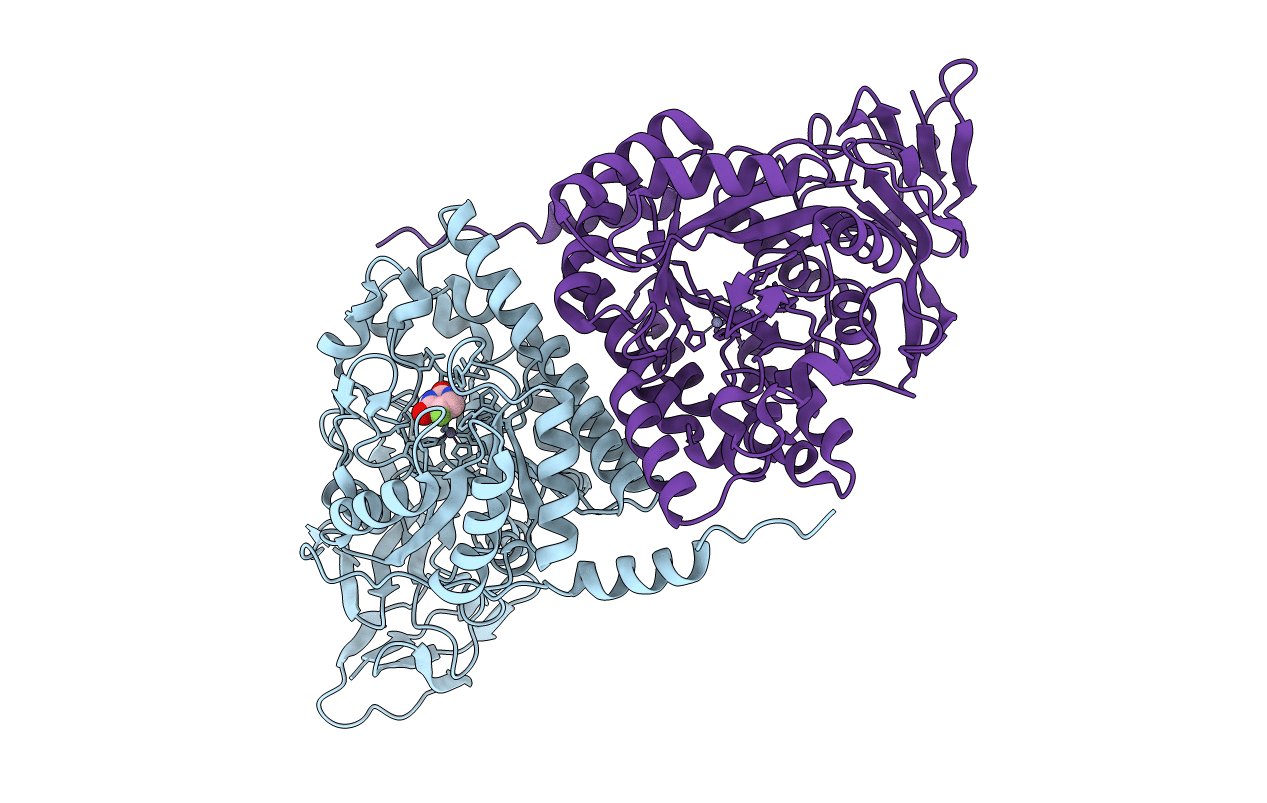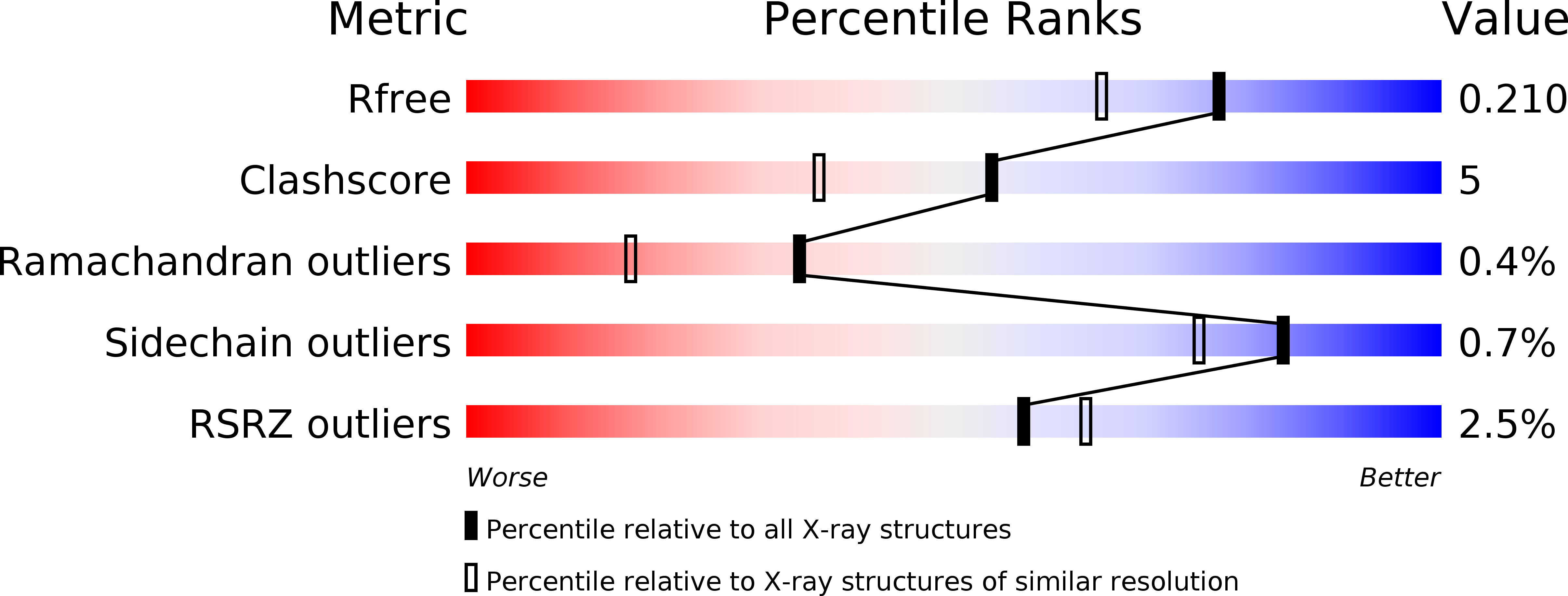
Deposition Date
2019-07-30
Release Date
2019-11-06
Last Version Date
2023-11-22
Entry Detail
PDB ID:
6KLK
Keywords:
Title:
Crystal structure of the Pseudomonas aeruginosa dihydropyrimidinase complexed with 5-FU
Biological Source:
Source Organism:
Host Organism:
Method Details:
Experimental Method:
Resolution:
1.76 Å
R-Value Free:
0.21
R-Value Work:
0.18
R-Value Observed:
0.18
Space Group:
P 31 2 1


